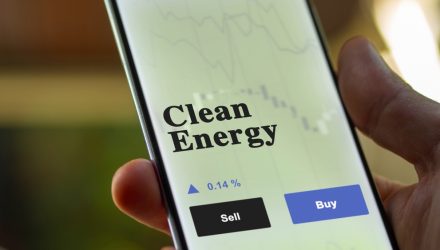As advisors consider tax-loss harvesting, clean energy ETFs are a good place to start.
With clean energy ETFs down significantly year to date, advisors can sell out of clients’ current positions to harvest losses and enhance exposure to the space.
Despite a very constructive policy background, clean energy ETFs have struggled in 2023. Clean energy technology tends to be very sensitive to interest rates, causing the segment to struggle as the Federal Reserve has lifted rates to a 22-year high.
Despite the current headwinds, it’s important to recognize the long-term opportunities for clean energy ETFs. U.S. Congress last year passed the Inflation Reduction Act (IRA) of 2022, marking the country’s most significant climate legislation. The law directs at least $369 billion toward incentives encouraging the adoption of renewable energy and other low-carbon technologies.
Advisors may consider selling positions in the iShares Global Clean Energy ETF (ICLN) and instead allocate to the ALPS Clean Energy ETF (ACES). Both funds have seen significant drawdowns year to date, but ACES is outpacing ICLN by nearly 200 basis points in 2023 and may improve exposure to the space.
While both funds offer exposure to the clean energy space, they provide unique exposures. SolarEdge Technologies (SEDG) has been among the segment’s worst-performing stocks this year. Shares of the company are down over 75% year to date as of November 6. Notably, SolarEdge is a top holding in ICLN but is not included in ACES.
Tax-Loss Harvesting
Understandably, no investor wants to lose money on an investment. The upside is that these losses can potentially be used to help reduce one’s tax bill.
Tax-loss harvesting involves selling investments at a loss, then using the capital losses to offset capital gains and/or ordinary income. If losses exceed gains or only losses are incurred, up to $3,000 can be used to offset ordinary income in the current year. Notably, any amount above $3,000 can be carried forward for use in future years.
The final step using the money from the sale to replace the investment. Investors can either maintain the portfolio’s existing asset allocation or invest in a new area.
For more news, information, and analysis, visit the ETF Building Blocks Channel.








